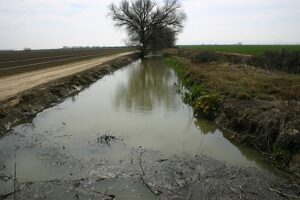 Agricultural drainwater evaporation basins in the Tulare Basin and surrounding area had been shown to contain selenium and other metals in various concentrations. H. T. Harvey & Associates was engaged to develop a cumulative impacts analysis and mitigation design to be applied as part of the Environmental Impact Report and Waste Discharge Permit conditions for continued operation of these basins.
Agricultural drainwater evaporation basins in the Tulare Basin and surrounding area had been shown to contain selenium and other metals in various concentrations. H. T. Harvey & Associates was engaged to develop a cumulative impacts analysis and mitigation design to be applied as part of the Environmental Impact Report and Waste Discharge Permit conditions for continued operation of these basins.
The focus of our work was the biological effects of salinity, selenium, and other naturally occurring trace elements concentrated in the evaporation basins. Our project documented the extent of contamination in the basin water and soils. We also recorded the use of the basins by breeding, migrant, and wintering shorebirds and waterbirds. Based on the exposure risks, level of use, and duration of exposure, we assessed the cumulative effects of the approximately 7000 acres of evaporation basins. Our team then designed mitigation measures to limit the exposure of birds to contaminants of concern. The comprehensive impact avoidance and mitigation plan that we developed became the cornerstone for continued operation of the evaporation basins, the impacts of which were both fully mitigated and reduced going forward. We continue to monitor and manage (with the operators) evaporation basins and mitigation wetland habitats for major farmers and drainage districts in the San Joaquin Valley, as we have been doing for more than 25 years..
Principal, Wildlife Ecology
Add your email to our mailing list to receive occasional ecological news from us.
Submit Your Details
